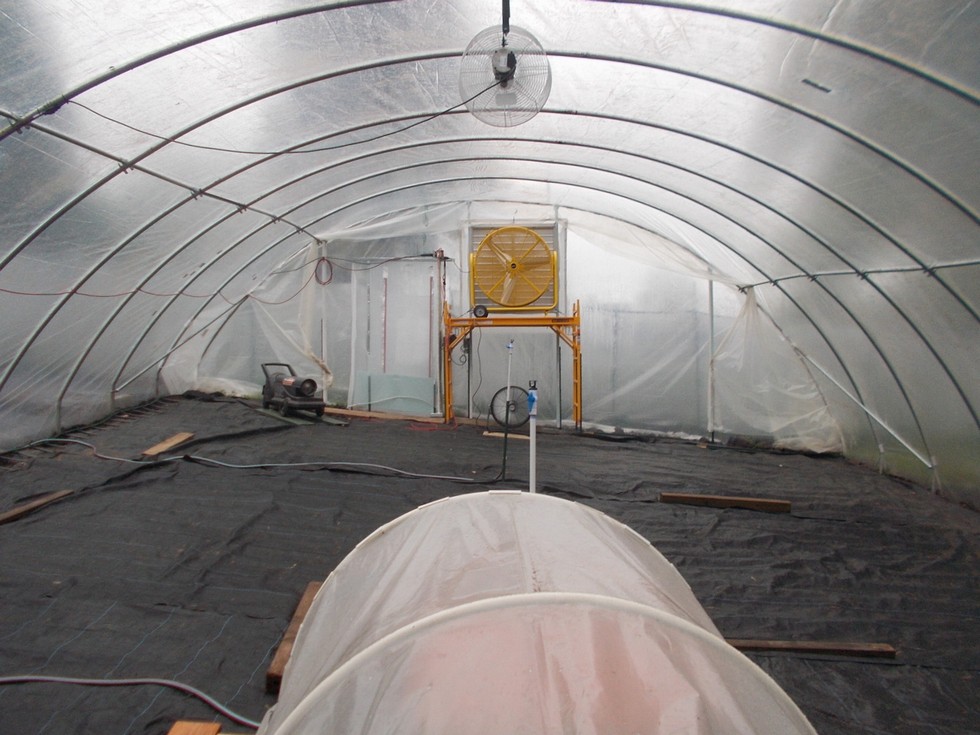| |
|
Entry Date
|
Nick Name
|
Location
|
|
Sunday, May 12, 2019
|

|
Matt D.
|
Connecticut
|
 |
Entry 71 of 210 |
 |
|
|
|
Interior Structure Additions (Part 1 of 2: Heating, Cooling and Insect Netting)
This shows supporting equipment looking from the base of the plant to where the main vine will grow in the future.
Heater
It has been getting cold at night, so I have added a supplemental torpedo style �Reddy Heater 200T� that runs on refined petroleum. This may not be the most ideal fuel source but it is only planned to be run for a few of the colder nights.
Misters
The white vertical PVC (polyvinyl chloride) pipes have Senninger Upright mini-Wobbler� outfitted with the #4 nozzle light blue (1/16�) which has a flow rate of 0.50 gpm (gallons per minute) and an approximate 32ft. diameter of coverage since I am running them at 20psi. These are intended to provide a cooling mist and not irrigate the plant. (Drip tapes are the intended irrigation source.) Adjustments are being made, but I am starting with having them run for 5min. every 15min. form 10am to 5pm since this is the hottest part of the day.
ZipDoor�
To get in and out of the structure while still having the option to �seal� the doorway required some innovation. I settled on getting a ZipDoor� Standard Door Kit for each side of the structure. It fits the requirements well, but the actual zipper needs some tape reinforcement to hold it in place.
Insect Netting
Not only are the vents sealed with insect netting the doorways are also. This is Protek Net Insect Netting in the 25 gr model. Some of the specifications are that it has 0.35mm x 0.35mm mesh size with 62% porosity, 90% light transmission, and a 2-3 year lifespan. This fine mesh was selected to provide a physical barrier to small insects such as aphids, thrips, white flies and mites. However, this is also part of the reason special screen boxes had to be build to provide increase in the area of the netting to allow for adequate air flow despite the reduced porosity of the material.
|
|
|



